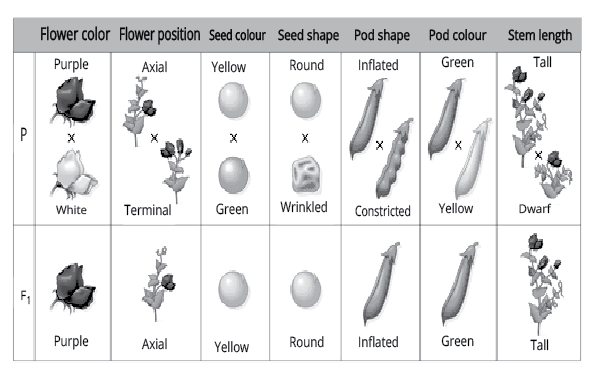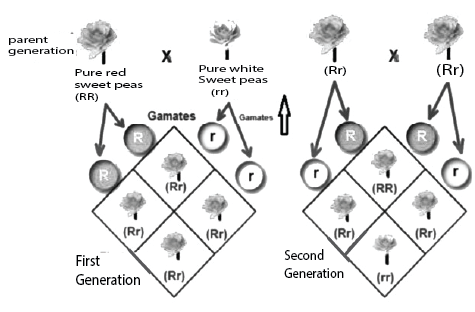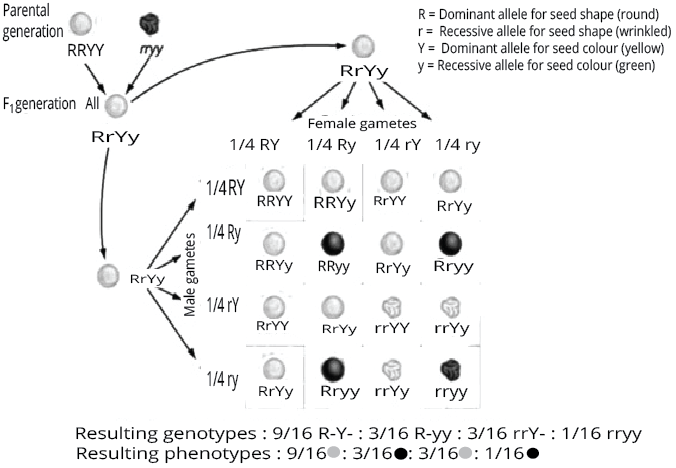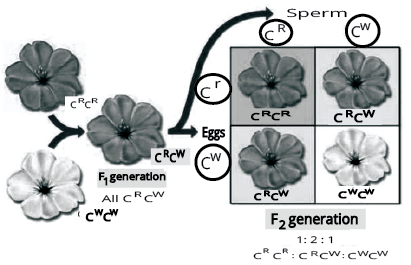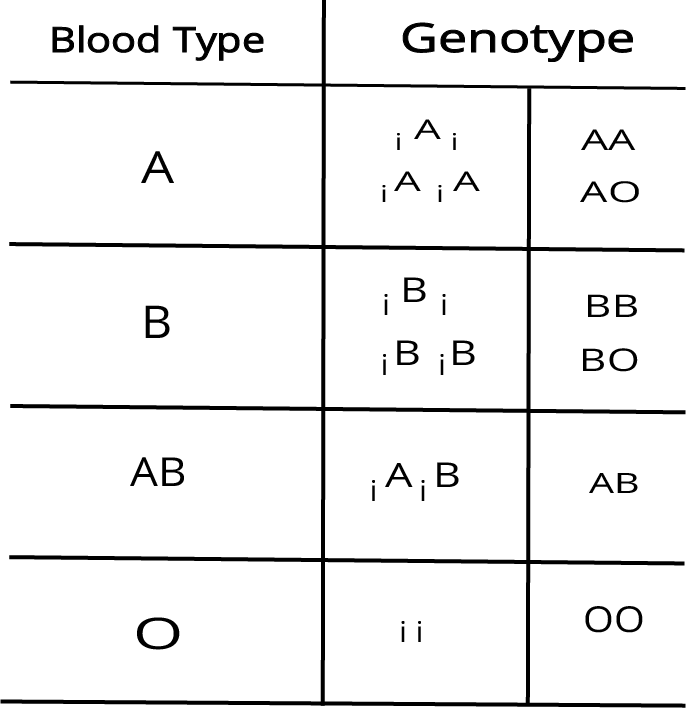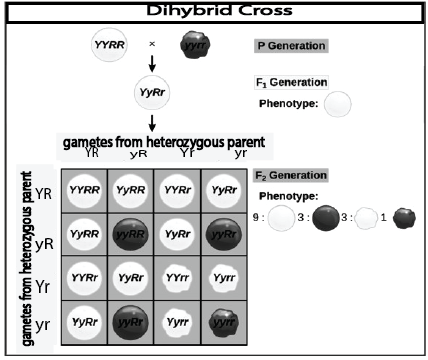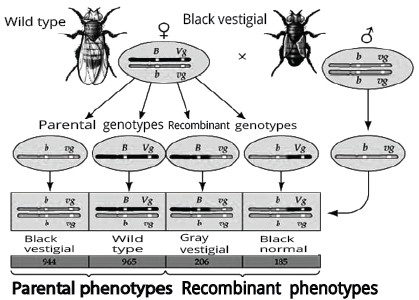Chapter 4 Principles of Inheritance and Variation Notes PDF Download- FREE


FAQs on Principles of Inheritance and Variation Class 12 Notes: CBSE Biology Chapter 4
1. Where can I find revision notes for Class 12 Biology Chapter 4 Principles of Inheritance and Variation?
Vedantu, a trusted online learning site, provides well-prepared revision notes for Class 12 Biology Chapter 4 Principles of Inheritance and Variation prepared by subject experts. The fifth chapter of Class 12 Biology is a part of Unit VII Genetics and Evolution. Vedantu’s Principles of Inheritance and Variation NCERT PDF Notes is a great study material for exam preparation. As it is curated by Vedantu’s team of subject matter experts who are well-versed in NCERT guidelines and syllabi, revision notes are an exceptional resource for learning and exam preparations. Vedantu’s Revision Notes for Class 12 Biology Chapter 4 are written in a simple manner to help students easily understand the chapter. It aids in providing complete coverage of the important topics and provides quick revision.
2. Why should I download Vedantu’s online revision notes for Class 12 Biology Chapter 4 Principles of Inheritance and Variation?
Principles of Inheritance and Variation Notes PDF Download provided by Vedantu are really useful in revising the important topics of the chapter. Those students who are aiming for top scores in Biology should include chapter-wise Class 12 Biology Revision Notes in their preparation requirements. In these online notes, the concepts are explained properly to help students clear all their doubts. Vedantu offers well-curated revision notes for Class 12 Biology Chapter 4 as well as other chapters to help students in effective revision. With the help of revision notes of Class 12 Biology Chapter 4, students will learn all the important facts and will be able to recall what they have studied so far. These notes are prepared by subject matter experts who have years of experience in the field of teaching. Students can score well in the paper with the help of online revision notes for Class 12 Biology Chapter 4 Principles of Inheritance and Variation designed by Vedantu.
3. What are Mendel’s laws of inheritance as per Vedantu’s revision notes of Class 12 Biology Chapter 4?
As per Vedantu’s revision notes for Class 12 Biology Chapter 4 Principles of Inheritance and Variations, Mendel’s laws of inheritance are:
Law 1- Law of Dominance: The dominant allele masks the effects of recessive alleles. Only the dominant allele expresses its phenotype. For example, the allele for tallness dominates over the allele for dwarfism.
Law 2- Law of Segregation of Genes: Individuals possess two alleles of a gene and each allele separates or segregates at the time of meiosis (that is, during the formation of gametes).
Law 3- Law of Independent Assortment: It states that alleles for separate traits are passed independently from parent to offspring. Mendel used dihybrid cross (cross of two different traits) in order to explain independent assortment.
4. What are the learning outcomes of Class 12 Biology Chapter 4 Principles of Inheritance and Variation?
Through Class 12 Biology Chapter 4 Principles of Inheritance and Variation, students will learn about various topics related to heredity, inheritance and variation. As per the chapter, heredity is a process of transmission of traits from parents to their offspring, either via asexual reproduction or sexual reproduction. The important topics of Class 12 Biology Chapter 4 Principles of Inheritance and Variation include Mendel’s experiment, sex determination, mutation, genetic disorders, etc. Students will learn how genes play a crucial role in the development of characteristics among species.
5. What is the principle of inheritance and variation?
Chapter 4 of Class 12 Biology “Principles of Inheritance and Variation” deals with the various topics of heredity, the laws of inheritance and the reasons for variation as well. Inheritance is the passing of genetic materials from parents to offspring and variation is the different alleles of a specific gene that gets passed on in a population and brings about the changes in the individuals making them different from one another in certain traits.
6. What is genetics in Biology Class 12?
As mentioned in Class 12 Biology, genetics deals with inheritance and variation principles. It mainly consists of topics like Mendel’s experiments with the pea plants, mutation theory, chromosomal theories, mendelian and chromosomal disorders, various linkages, pedigree analysis, sex determination etc. Principles of Inheritance and Variation NCERT PDF Notes are very important as they develop the base for students who are willing to take up studies relating to life sciences in the future.
7. Does Vedantu provide the best study material?
Vedantu is a learning website that provides the best and most authentic study materials to students. Vedantu has a group of expert teachers who minutely study the exam pattern and then develop the study materials accordingly. These study materials are per the CBSE syllabus and format making them more accurate for students of Class 12. Hence, to get good marks in their Class 12 Biology exam and develop proper knowledge of Chapter 4, they should refer to Vedantu’s Class 12 Biology Chapter 4 Notes.
8. Where can I get the Revision Notes for Class 12 Biology Chapter 4?
The Revision Notes for the Class 12 Biology Chapter “Inheritance and Variation” are available on the website of Vedantu free of cost. It is trusted by many students because of its quality study materials. To download these Revision Notes, you can visit the page CBSE Class 12 Biology Revision Notes Chapter 4 or visit Vedantu’s website. On this page, you will find the Principles of Inheritance and Variation Notes PDF in the Study Materials section. To download them, you can click on the download PDF option. You can now use this PDF offline as well.
9. What is pedigree analysis?
Pedigree Analysis is a concept that the students study in Chapter 4 of Class 12 Biology, wherein they learn about the various concepts of inheritance, variation and heredity. To understand the actual reason for the variation and similarity of traits among the offspring in a generation, a certain type of analysis is done that is known as the Pedigree Analysis. Here the phenotype and genotype are revealed and also the family traits are portrayed in the form of an easy chart.
10. How can Principles of Inheritance And Variation Notes help in exam preparation?
Inheritance and Variation Class 12 Notes PDF simplify complex concepts, provides quick revision material and includes diagrams and summaries that make it easier to understand and recall key topics.

























